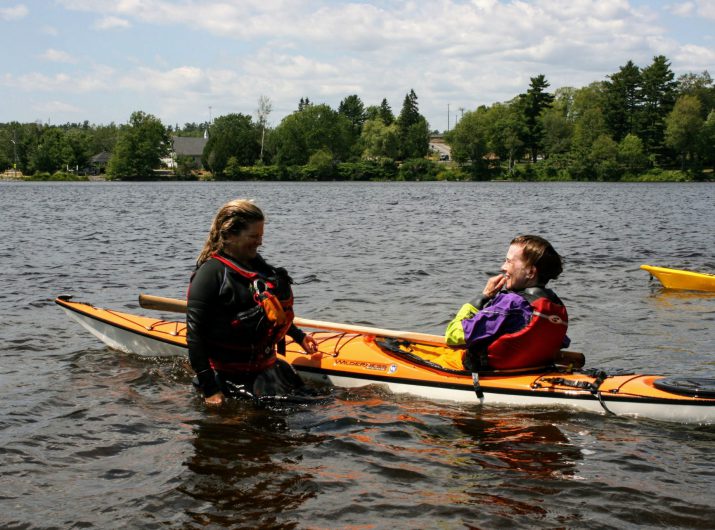Learning how to give positive and constructive criticism to a student is one of the more difficult teaching skills for new instructors to master. Tim Dyer from White Squall provides some tips and tricks that he has picked up over the years.
The art of providing corrective feedback to students is a fine dance. You want to be constructive so they learn, but you don’t want to brow beat them by focusing on the negative side of their paddling all day
I have included a couple of tips and pointers that I have figured out along the way. Hopefully some will be valuable to you.
- An instructor must know clearly what they are expecting from a candidate, and they must demonstrate and communicate that -before they even try to make corrections.
- In the early stages of a course, before you’ve gained the group’s trust best to use global corrections first and only begin one on one when you know the candidate trusts you and is willing to listen.
- Be humble. If they know that you are a learner who is always striving to improve, then they too will be more receptive. Don’t D & C just because you think you’re supposed to. Sometimes it’s better to shut up, and let a paddler work it out. You will know by observation if they are ready for advice, or if they are trying to work through it on their own
- Further to the above, a good instructor allows for quiet time. There is no need for constant D & C while out on the water.
- In the early stages, if you’re not sure if a candidate is going to listen ask them!! “Can i give you a pointer that will help you in turning more efficiently?”
- In all D & C go directly to what it is you’re trying to focus on. Candy coating it will be seen for what it is, contrived. It adds words and you’re striving for economy of words to ensure the message is received.
- Focus on major corrections first and relate it to movement of body, boat and blade.
- Strive to identify causes of inefficient technique, not symptoms Eg. you observe that there’s a lot of splash at entry of fwd stroke-instead of saying “you need to reduce splash” a more effective remedy would be to demonstrate a clean, vertical placement of blade with extended lower arm before power is applied and have them observe and experiment.
- Continue with global D & C throughout course when the majority of the group are having trouble with the same thing-it’s an extremely effective and efficient way to get the same message across to multiple candidates, and for those who are don’t need the correction, you’re simply providing them with valuable review so everybody wins.
- Think carefully about what you want to say in a D & C and make sure you approach the paddler so they can see and hear you clearly without shouting. Keep your body/boat/blade quiet while talking, and conversely keep your mouth shut when doing a demo. There are always exceptions to this, but that’s what good rules are for-breaking once in a while!
- Once you’ve asked them to work on a skill improvement, don’t paddle off and leave them alone, keep an eye on them even as you go to help someone else. Let them know you care and want to share in their success once they get it right. I liken it to being in a basketball game where you need to train your peripheral vision to see what’s going on all around you. A simple shout of encouragement once they get it is sometimes all they need.
- If a D & C is clearly not working, then change gears. Maybe the paddler doesn’t hear well or maybe they simply need another demo. Have fun and admit if you’re strategy sucked. “Let’s try something else.”
- One of the most effective D & C techniques is to use another candidate as a demo for the person you are trying to help. It accomplishes many things: first, you are able to sit with the person while the demo is taking place and make quiet comments. Second, you are reinforcing good technique in another student, and bolstering their self esteem. Thirdly, you are showing to the group that you recognize and support their talents. Finally-hey-you get to take a break-yeehaw!
- The whole point of D & C is to coach them constructively to become better paddlers not to make them carbon copies of you! Everyone will have their own unique style, and you should nurture that within the context of efficient body position, boat edge and blade placement.
